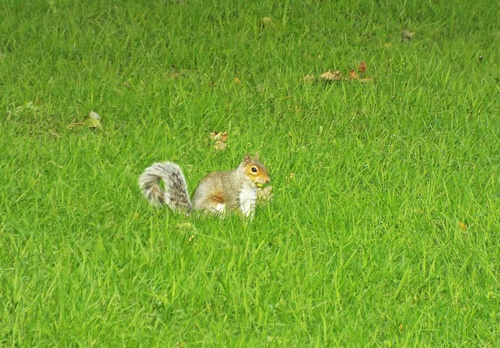One day back in March I went to explore a creek on the southern outskirts of Lytham, and though it looked quite an attractive place it was also a very muddy place as it was low tide at the time. Promising myself I would go back one day when it was high tide the opportunity came towards the end of August and I was also able to tie in my visit to the creek with a later walk along part of Lytham beach.
Leaving the van in the quiet lane at the side of the minor creek where I saw the welly boot stuck in the grass back in March I walked along the top of the bank to the main road then along to the creek with all the boats. Negotiating rather a tricky stile the first thing I came to was some sort of pumping station with the water in the creek bubbling like a boiling kettle, but just as I found a good spot to take a photo the bubbling stopped and everything became calm.
The creek itself, at high tide, looked much more attractive than it was in March though I couldn’t go as far along as I did back then. The raised bank sloped down at the far end to a large area of flat grassland split by a minor creek, and though everywhere had been bone dry on my previous visit the grass was now very boggy under the surface. And how do I know that? – because my feet sank into it and I got my trainers covered in black mud!
As I’d been walking along I’d noticed several tortoiseshell butterflies flitting about, in fact there weren’t just several there were lots of them and some of them did actually stay still long enough for me to get a few shots of them.
Using the longer grass to wipe the worst of the mud off my trainers I went back along the top of the bank and made my way back to the van for the next part of my day. Driving along the seafront I came to Lowther Gardens which was the nearest place to where I wanted to be so I left the van there and later walked a short distance along the road, crossing over to a short slipway onto the beach. Through reading someone else’s blog I’d recently found out about a short stretch of the beach where I could find some old boats and even older tractors and on such a lovely sunny day they were a photo opportunity not to be missed.
Farther along the beach and close to the low water line was the Celestial Dawn, a 41ft ketch which ran aground in August 2019. Two sailors, along with some equipment and personal items, were rescued by the Lytham inshore lifeboat but with a sixteen inch hole in its hull the Celestial Dawn has lain on the beach ever since, being enveloped by the tide twice a day so only the masts are visible.
Heading back to the tractors I came across an upturned dinghy buried in a water filled hole in the marshy grass; any deeper and it would have looked like a boat shaped coffin. Back at the slipway I took my last few shots of the boats and tractors, most of which were obviously past their best, then went back to collect the van from Lowther Gardens car park and head for home.
It had been a lovely day, the weather had been perfect, and it had been good to find the boats and tractors which I hadn’t previously known were there. There’s actually a third part to this particular day too but the photos I took really deserve a post of their own so I’ll save those for a Monday walk another time.
























































































































































